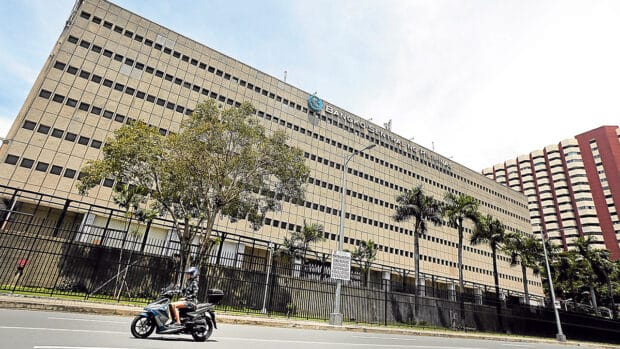

The slower-than-expected economic growth in the third quarter would help justify another potential rate cut by the Bangko Sentral ng Pilipinas (BSP) in December, although a volatile peso might complicate the central bank’s easing cycle, analysts said.
Emilio Neri Jr., lead economist at Bank of the Philippine Islands (BPI), said that while further easing is needed to support growth, the BSP may find it “more appropriate” to keep rates steady if the peso weakens sharply in the coming weeks.
READ: BSP delivers 25-bp rate cut; more to come
“The BSP may use the recent GDP (gross domestic product) data as justification for a rate cut in December,” Neri said in a commentary.
“However, external developments may also prevent them from cutting. Uncertainties abroad have intensified following the election victory of US President [Donald] Trump, causing more volatility in the peso,” he added.
Latest data showed the Philippine economy grew at an annualized 5.2 percent in the three months through September, the weakest expansion in five quarters.
Article continues after this advertisement
That growth was slower than the 6.4-percent expansion in the previous quarter, and was also below market expectations. Private consumption picked up during the period on the back of easing food prices, but state spending fell.
Article continues after this advertisement
Below target
In the first nine months, average GDP growth stood at 5.8 percent, falling short of President Ferdinand Marcos Jr.’s target of 6 to 7 percent for 2024. That said, the BSP is now at a point where it has to relax monetary conditions amid expectations that the economy may grow below target this year.
But unlike in the United States where a slowing job market had prompted the US Federal Reserve to deliver a jumbo 50-basis point (bp) cut in September, the BSP entered its easing era in August with the traditional quarter point reduction to the policy rate.
READ: US Fed makes quarter point cut as Powell insists he would not quit
In October, the BSP cut the policy interest rate by 25-bp again to 6 percent, with Governor Eli Remolona Jr. dropping clear hints of additional—but gradual—easing moves until the key rate falls to 4.5 percent by the end of 2025.
Remolona said a 25-basis-point cut at the Dec. 19 meeting of the Monetary Board was “possible.” But he said an outsized half-point reduction was “unlikely” to happen. Overall, the BSP chief did not rule out the possibility of additional cuts cumulatively worth 100 bps in 2025.
However, some analysts flagged the risks of a rate cutting pause should the peso remained under pressure. The local currency is currently trading past the 58-level amid a rallying dollar that’s being powered by global uncertainties like the impact of a second Trump presidency.
For Jojo Gonzales, analyst at Bank of Ameria Global Research, a prolonged weakness of the peso might prompt the BSP to be more careful with its easing,
“Expectation of a further 100bp cut in the policy rate in 2025 may be challenged by the fluid conditions in the US that point to a stronger US dollar, increased tariffs on trade, more restrictions on immigration—some of which complicate monetary policy.” Gonzales said in a separate commentary.
“For now, the BSP is more focused on domestic inflation and growth conditions as to keep its easing bias,” he added.

